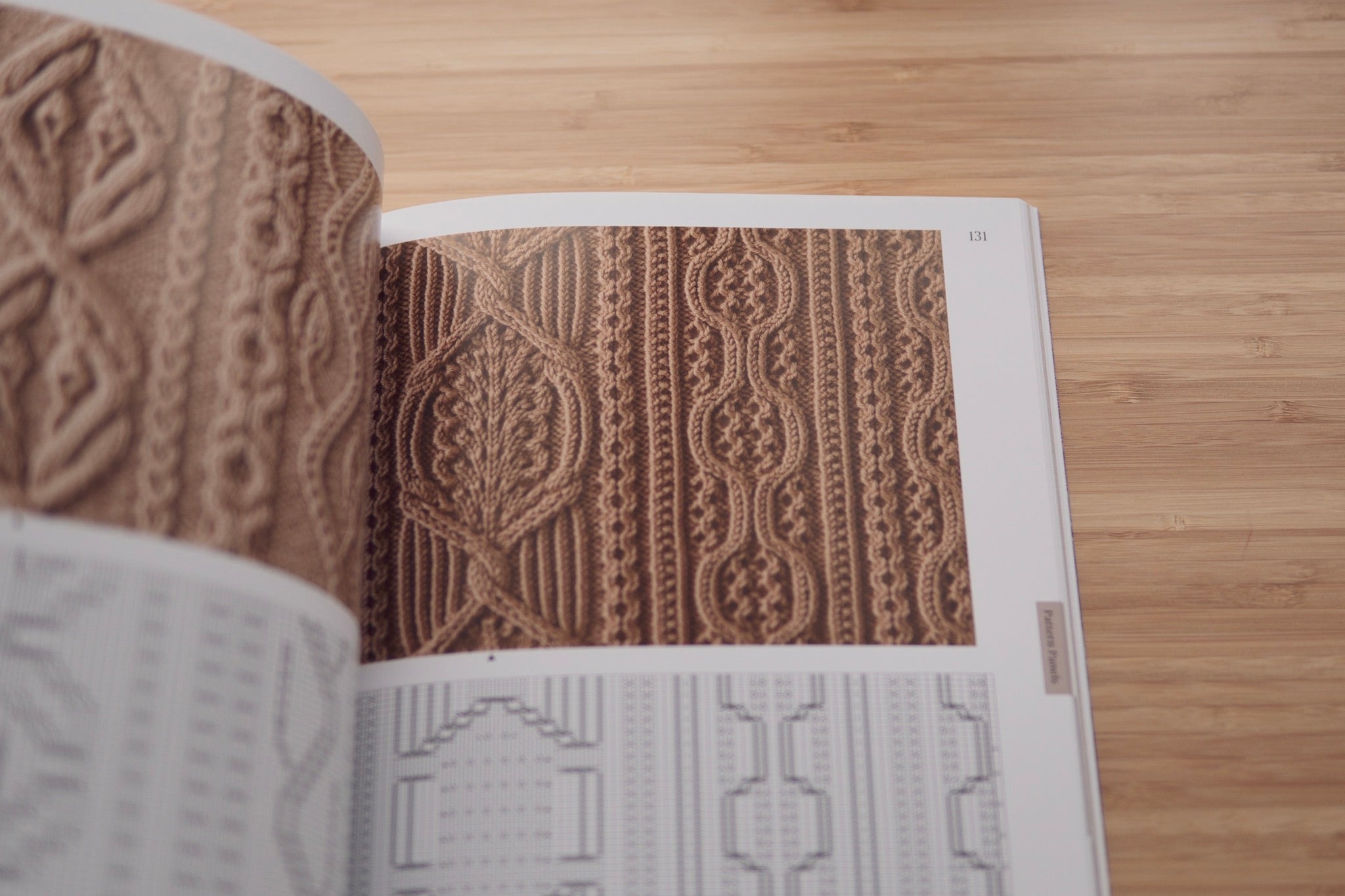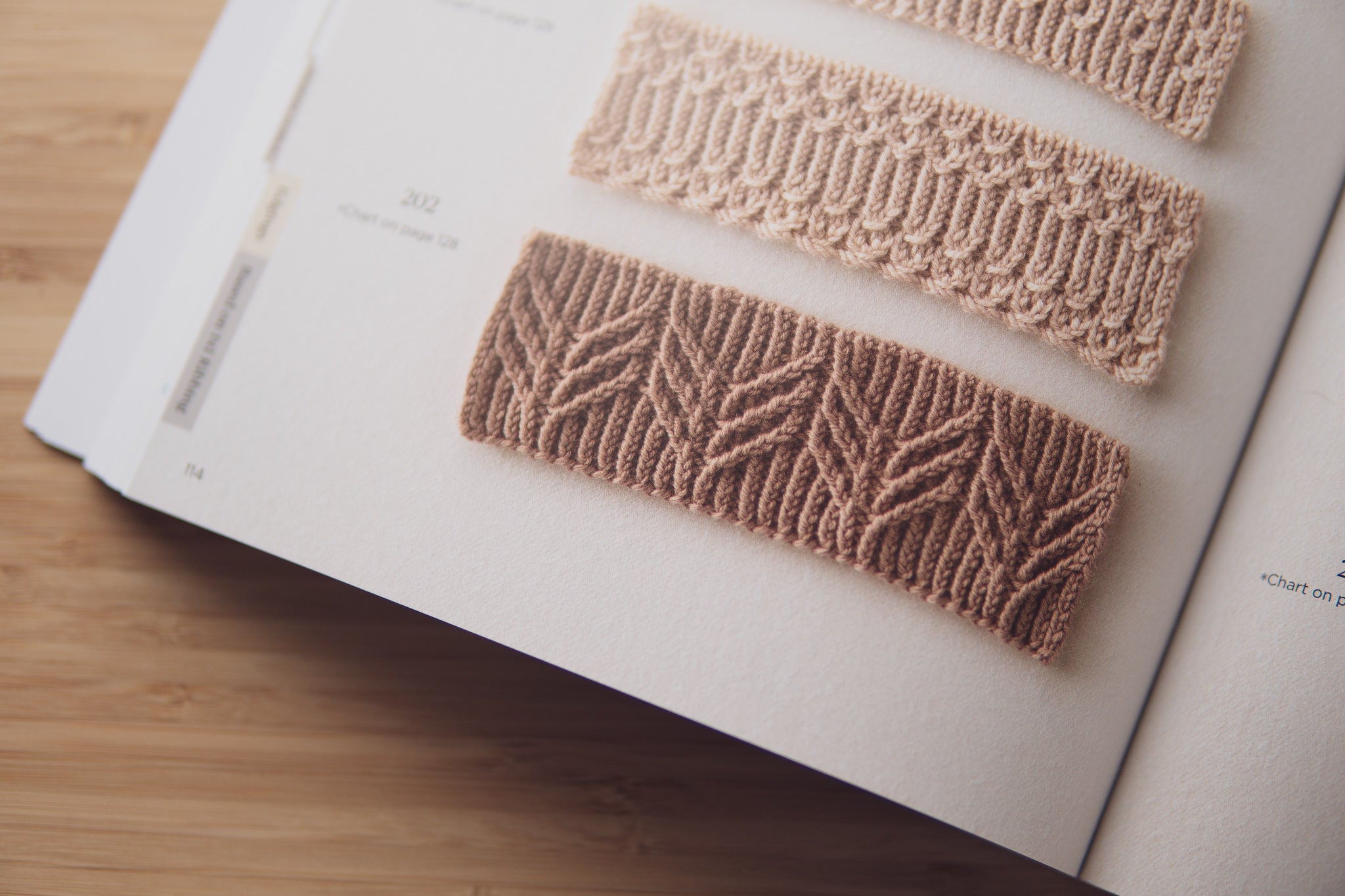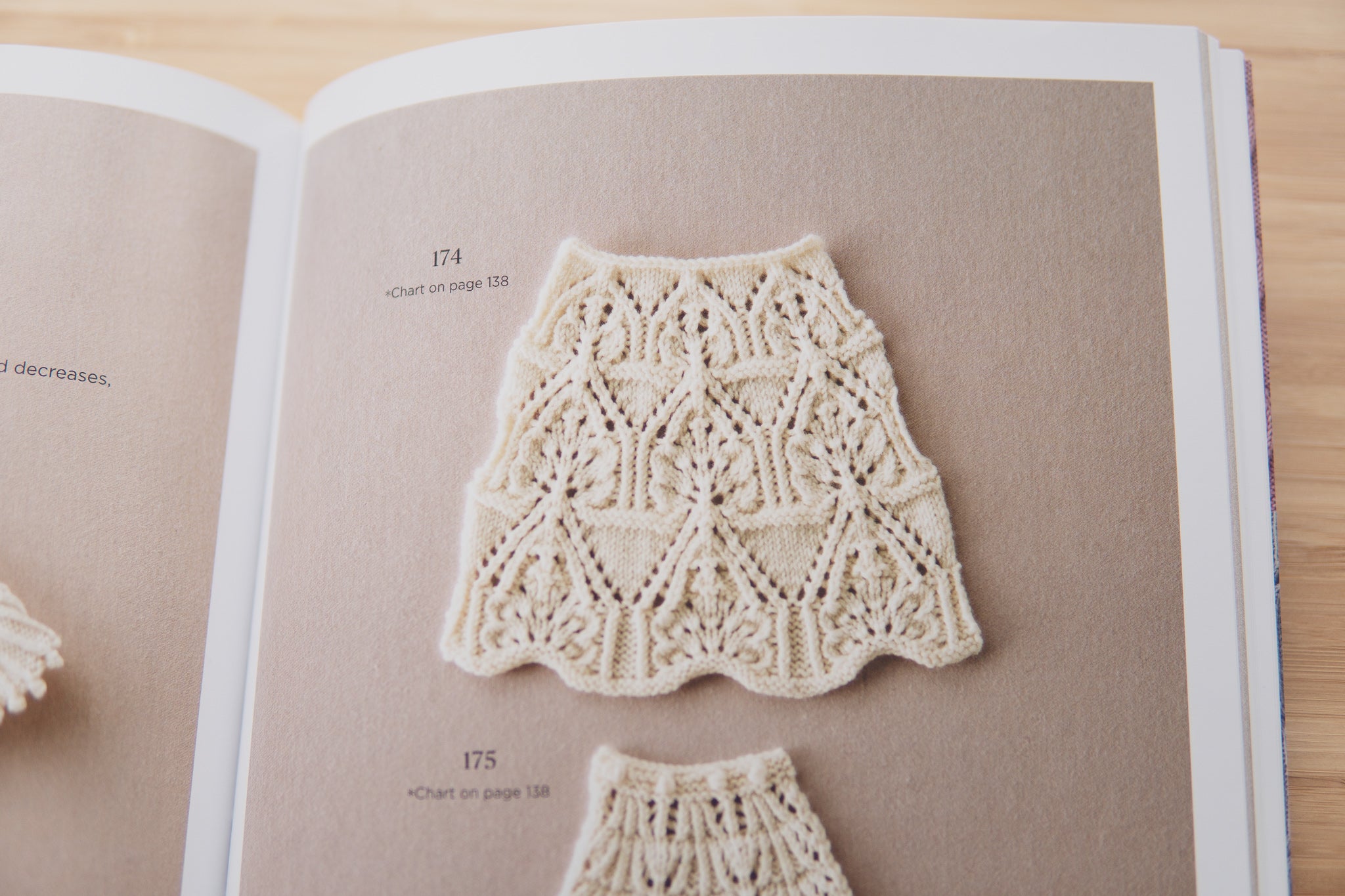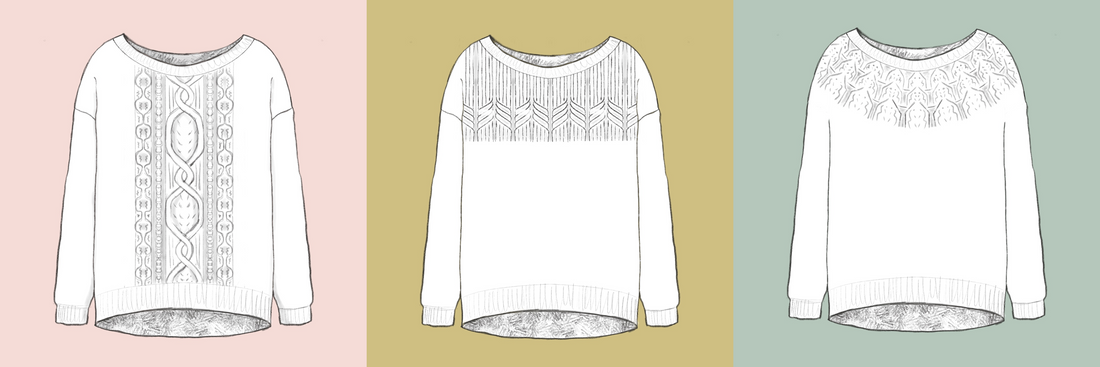You can use knitting stitches on panels, edges, pockets, or all-over to make your own knitting designs.
What is a knitting stitch book?
A collection of instructions for knitting various stitch patterns, but without patterns for completed garments. The instructions are charted or written so you can modify the number of stitches you work them on. The collections can be for colour knitting or texture knitting.
The collections are often theme-based—Fair Isle patterns, Traditional guernsey patterns, Japanese knitting stitches. Other collections are general and include a little of everything. Barbara Walker’s Knitting pattern treasuries 1, 2, 3, and 4, are great examples of general collections. They span from garter stitch to traditional lace.
Recently, I wrote about two new Japanese knitting stitch books. And the stitches in the books are so elaborate and inspiring that they are satisfying to just swatch for fun. But it occurred to me that it might be useful to share with you what you can do with books like these. When faced with 250 stitches, it can be a little overwhelming. You’re spoiled for choice as they say.
(Don't forget, you can also use knitting stitch book just for the fun of trying new techniques. Flip through a knitting stitch book and look for a symbol you don’t recognize or a stitch you haven’t tried. Then cast on and just try it out! A swatch is a risk-free place to try these things out, and it’s amazing what you can learn. This is how I learned new knitting skills like bobbles, mock cables, butterfly stitch.)
Add a knitting stitch to a sweater
Some knitting stitches are so elaborate, they’re like a rich dessert; you don’t need a whole lot of them. Consider adding them as a design detail to a plain piece of knitting. A sweater is a great place for this, because there are so many parts of the sweater that look good with some texture.
How to use a knitting stitch on a sweater design
- Sketch out a plain version of the sweater. You can sketch it on paper and then take a picture with your camera or phone, or sketch it on a tablet. I made all the sketches in this post on an iPad using Procreate.
- Make a copy of your sketch digitally or print off a few copies of your sketch.
- Outline the area where you want to add the knitting stitch.
- Use the photo of the knitting stitch from the knitting stitch book to sketch out what the stitch would look like on your sweater.
- Once you are happy with your choice, figure out how the knitting stitch will fit into your stitch count. Figure out the approximate number of stitches that you have to play with, then study the multiples of the knitting stitch. You want to make sure that it will fit. Consider symmetry and where the details will fall.
- After you’ve done your calculations, take the time to sketch your design out with the exact number of multiples. This can take a little extra time, but it’s much much less work than it is to knit your design. Much better to make a mistake on paper than it is to make a mistake in your knitting!
For example, here's a simple sweater outline:

And here are three sweater designs that use this plain sweater sketch with knitting stitches from Japanese Knitting Stitch Bible.
Design #1

First, I created my blank sketch of a basic sweater. It has a simple round neck, straight sides, a curved hem, dropped shoulders and long sleeves.
Then I copied my sweater sketch to a new file. Whenever I want to add something to the sketch, I am careful to add a new layer in Procreate. If you are doing this with paper, you might want to use tracing paper.
I started by roughly sketching in the cable arrangement from pattern number 131 from Japanese Knitting Stitch Bible onto the front of the sweater.

Once I was happy with the proportions, I finessed the drawing with a darker pencil.
(I can totally imagine wearing this!)
Design #2

For the second design, I decide to try a stitch pattern across the shoulders.
Again, I copied my blank sweater sketch to a new file, and made a layer. I drew in one repeat of this twisted rib with chevron design. This is #202 from Japanese Knitting Stitch Bible.

Then, and this is the nice part of sketching on an iPad, I copy-pasted that one multiple across.
I think this design would look great if you did the twisted rib pattern on the front and back of the sweater.
Design #3

And finally, for the third one, I wanted to try one of the round yoke patterns from Japanese Knitting Stitch Bible. This is pattern #174.

For this sweater design, after I copied the blank sweater to a new file, I erased the shoulder seams because you wouldn’t have those in a round yoke sweater.
In the first layer, I sketched out the arc of the yoke first, and then added the design.
Ways to add knitting stitch details in your knitting
Sweaters. Vertical panels up the front or back, or up the sleeves. Horizontal panels across the chest or shoulders, or around the cuffs. Edgings uses as button bands or in place of ribbing. Yoke patterns on a round yoke sweater. Pockets.
Hats. Use edging instead of ribbing. Almost any knitting stitch, if the repeat is small enough, can be used all over on a hat.
Scarves. Most patterns can be used all over on scarves, as long as you knit an selvedge or garter stitch border. Scarves tend to curl, so avoid using a knitting stitch that has a lot of tension.
Home accessories. Swatches of knitting stitches can be sewn together as a patchwork blanket. And of course a blanket is a beautiful place to showcase a knitting stitch as an all over pattern. Knitted pillows are wonderful accessories, and not too much knitting.
And that’s how you can use a knitting stitch book and to sketch your own knitting designs! I hope you enjoy!
